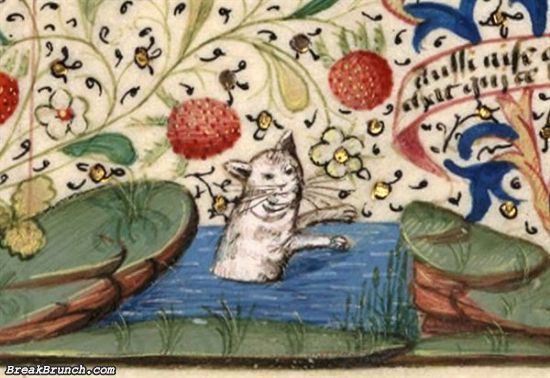


- MEDIEVAL CAT PAINTINGS BARNORAMA ... SKIN
- MEDIEVAL CAT PAINTINGS BARNORAMA ... FULL
- MEDIEVAL CAT PAINTINGS BARNORAMA ... LICENSE

MEDIEVAL CAT PAINTINGS BARNORAMA ... SKIN
And when he hath a fair skin, he is as it were proud thereof, and goeth fast about: and when his skin is burnt, then he bideth at home and is oft for his fair skin taken of the skinner, and slain and flayed. And he maketh a ruthful noise and ghastful, when one proffereth to fight with another: and unneth is hurt when he is thrown down off an high place. In time of love is hard fighting for wives, and one scratcheth and rendeth the other grievously with biting and with claws.
MEDIEVAL CAT PAINTINGS BARNORAMA ... FULL
He is a full lecherous beast in youth, swift, pliant, and merry, and leapeth and reseth on everything that is to fore him: and is led by a straw, and playeth therewith: and is a right heavy beast in age and full sleepy, and lieth slyly in wait for mice: and is aware where they be more by smell than by sight, and hunteth and reseth on them in privy places: and when he taketh a mouse, he playeth therewith, and eateth him after the play. Pope Innocent VIII issued a papal bull in 1484 condemning the “devil’s favorite animal and idol of all witches” to death, along with their human companions to death.ġ3th-century Franciscan monk Bartholomaeus Anglicus refrained from demonic tattle, but neither did he paint cats as angels:
MEDIEVAL CAT PAINTINGS BARNORAMA ... LICENSE
And as if they have, in this way, received a license for passion, each one takes the nearest man or woman and they join themselves with the other for as long as they choose to draw out their game. They do not sing or recite hymns in a distinct way, but they mutter them with their teeth closed and they feel in the dark towards where they saw their lord], and when they find it, they kiss it, the more humbly depending on their folly, some on the paws, some under the tail, some on the genitals. As soon as they see this cat, the lights are turned out. … hanging by a rope, a black cat of great size. In the late 12th-century, writer Walter Map, a soon-to-be archdeacon of Oxford, declared that the devil appeared before his devotees in feline form: Their close ties to paganism and early religions were enough for cats to be judged guilty of witchcraft, sinful sexuality, and fraternizing with Satan. The medieval church took a much darker view of our feline friends. Ancient Egyptians went so far that they shaved their eyebrows as a sign of their deep sorrow for the deceased pet.Īberdeen University Library, MS 24 f. The body of the cat would be wrapped in the finest materials and then embalmed in order to preserve the body for a longer time. When a cat died, it was buried with honors, mummified and mourned by the humans. The Vintage News reports that harming a cat in those days was punishable by death, exporting them was illegal, and, much like today, the death of a cat was an occasion for public sorrow: Certain Egyptian goddesses, like Bastet, were imbued with unmistakably feline characteristics.


 0 kommentar(er)
0 kommentar(er)
